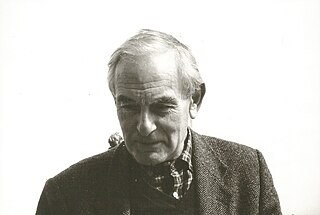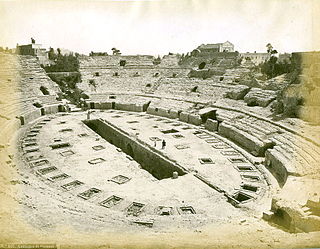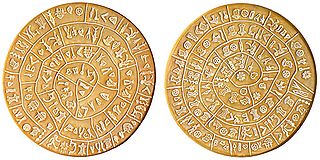Giovanni Becatti (1912–1973) was an Italian Classical art historian and archaeologist.

Classical antiquity is the period of cultural history between the 8th century BC and the 5th or 6th century AD centered on the Mediterranean Sea, comprising the interlocking civilizations of ancient Greece and ancient Rome known as the Greco-Roman world. It is the period in which Greek and Roman society flourished and wielded great influence throughout Europe, North Africa and Western Asia.
Contents
Born at Siena, Becatti was educated at the University of Rome under Giulio Giglioli. Becatti was appointed to the Superintendency of Ostia in 1938. He was professor of Archeology and History of Classical Art at the University of Pisa (1941–1944) and at the University La Sapienza of Rome (1945–1946).

Siena is a city in Tuscany, Italy. It is the capital of the province of Siena.
Giulio Quirino Giglioli was an art historian of classical Roman and Etruscan art and was associated with Fascism in Italy.
From 1947 to 1950, he was Director of the excavations of Ostia Antica. Then Becatti moved to chair the department at the University of Milan from 1952 to 1956, in Florence from 1957 to 1964 and the University of Rome from 1964 to his premature death in 1973.

Milan is a city in northern Italy, capital of Lombardy, and the second-most populous city in Italy after Rome, with the city proper having a population of 1,372,810 while its metropolitan city has a population of 3,245,308. Its continuously built-up urban area has a population estimated to be about 5,270,000 over 1,891 square kilometres. The wider Milan metropolitan area, known as Greater Milan, is a polycentric metropolitan region that extends over central Lombardy and eastern Piedmont and which counts an estimated total population of 7.5 million, making it by far the largest metropolitan area in Italy and the 54th largest in the world. Milan served as capital of the Western Roman Empire from 286 to 402 and the Duchy of Milan during the medieval period and early modern age.

Florence is the capital city of the Italian region of Tuscany. It is the most populous city in Tuscany, with 383,084 inhabitants in 2013, and over 1,520,000 in its metropolitan area.
Becatti continued to publish on and excavate Ostia throughout his career. He altered his publishing interests from Etruscan subjects to Ancient Greek and Roman Art.

The Etruscan civilization is the modern name given to a powerful and wealthy civilization of ancient Italy in the area corresponding roughly to Tuscany, south of the Arno river, western Umbria, northern and central Lazio, with offshoots also to the north in the Po Valley, in the current Emilia-Romagna, south-eastern Lombardy and southern Veneto, and to the south, in some areas of Campania. As distinguished by its unique language, this civilization endured from before the time of the earliest Etruscan inscriptions until its assimilation into the Roman Republic, beginning in the late 4th century BC with the Roman–Etruscan Wars.
He was the editor of the prestigious Enciclopedia dell’Arte Antica (1958–1966), with and after Bianchi Bandinelli. He was a visiting professor in the United States at Princeton University (1963–1964) and the University of Chicago (1969). He received the title of "Doctor Honoris Causa" from the University of Louvain (1969).

The United States of America (USA), commonly known as the United States or America, is a country composed of 50 states, a federal district, five major self-governing territories, and various possessions. At 3.8 million square miles, the United States is the world's third or fourth largest country by total area and is slightly smaller than the entire continent of Europe's 3.9 million square miles. With a population of over 327 million people, the U.S. is the third most populous country. The capital is Washington, D.C., and the largest city by population is New York City. Forty-eight states and the capital's federal district are contiguous in North America between Canada and Mexico. The State of Alaska is in the northwest corner of North America, bordered by Canada to the east and across the Bering Strait from Russia to the west. The State of Hawaii is an archipelago in the mid-Pacific Ocean. The U.S. territories are scattered about the Pacific Ocean and the Caribbean Sea, stretching across nine official time zones. The extremely diverse geography, climate, and wildlife of the United States make it one of the world's 17 megadiverse countries.

Princeton University is a private Ivy League research university in Princeton, New Jersey. Founded in 1746 in Elizabeth as the College of New Jersey, Princeton is the fourth-oldest institution of higher education in the United States and one of the nine colonial colleges chartered before the American Revolution. The institution moved to Newark in 1747, then to the current site nine years later, and renamed itself Princeton University in 1896.
He was member of the Accademia Nazionale dei Lincei, of the Pontificia Accademia romana di Archeologia, of the Accademia della Arti del Disegno, of the Istituto di Studi etruschi e di Studi romani.








